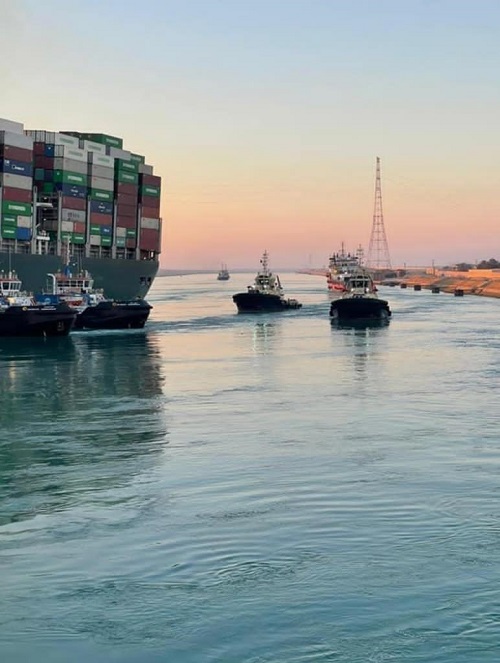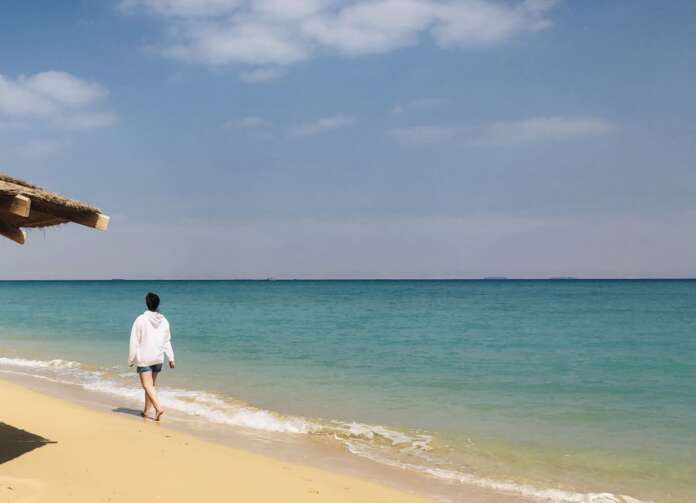In the azure waters of the Gulf of Suez, about 20 to 30 kilometres from the shore and 60 kilometres from the entrance of the Suez Canal, in the distance you can still see giant tankers lined up to finally pass through the world’s busiest artificial canal and cross the Mediterranean. Just a few days ago, we managed to free a 200,000-tonne giant container ship, Ever Given, that has been wedged across the Suez Canal blocking the global shipping lane for six days. Four hundred ships, including several oil tankers and liquefied natural gas (LNG) ships, have been trapped since last Tuesday at the two entrances to the canal. The challenge faced now is the backlog and congestion of the ships and it may take up to a week for the traffic jam to resolve.
The Suez Canal, a historical overview
152 years ago, the world’s most important 193-kilometre-long artificial waterway was opened with great splendour. Very high-level guest arriving in Cairo to celebrate the opening of the Suez Canal were hosted in the elegant Gezirah Palace, built in 1869. The Palace was also the venue of the first performance of Aida, composed by Verdi for this occasion (today it serves as part of the Marriott Hotel chain.)

It was not without reason that the opening of the Suez Canal was welcomed with such enthusiasm. The brilliant engineering performance significantly shortened the trade route between Asia and Europe, which brought significant extra profit to traders all along the value chain. However, the construction of the canal cost too many lives. More than one million Egyptians worked on the 10-year excavation project, 120,000 of whom died of exhaustion, various infectious diseases and accidents. In the beginning, 500 boats crossed the canal every year, which of course was much narrower and shallower than it is today. By comparison, today, 500 ships cross the canal in 10 days. In 2020, almost 19,000 ships passed through the Suez Canal.
There was a time when there was not so much traffic and not even a single ship could pass through the canal. After the 1967 Six-Day War, Israeli forces occupied the Sinai Peninsula, including the entire east bank of the Suez Canal. Unwilling to allow the Israelis to use the canal, Egypt immediately imposed a blockade which closed the canal to all shipping for eight years, until 1975.
The canal has been continuously expanded since 1980, most recently in 2015, when they launched the New Suez Canal – a parallel second shipping lane along part of the Suez Canal – reducing transit time from 18 hours to 11 hours and doubling the channel’s capacity from 49 to 97 ships a day. The new canal also allows ships to sail in both directions at the same time. Today 12 per cent of global trade, almost 10 per cent of total seaborne oil trade and roughly 8 per cent of global LNG trade pass through the canal.
The blocked ship

The protagonist of the current blockade is one of the world’s largest container ships, Ever Given. The Taiwan-operated and Panama-flagged mega tanker is just 3 years old, 400 metres long and 60 metres wide that weighs about 200,000-tonnes. The ship was sailing from China to Rotterdam when it ran aground with a cargo of 20,000 containers. Last Tuesday, when the accident occurred, a very strong 120 km/h wind was blowing, which is a quite common phenomenon here during this period. It’s hard to imagine that only the high winds and dust storms caused the accident. According to the Suez Canal Authority, bad weather conditions were not the only reason that caused the hull to deviate from the waterway adding that an investigation would be required to determine whether technical or human errors occurred.
In 2017, a Japanese container vessel blocked the canal after it ran aground following reported mechanical issues. The Egyptian authorities deployed tug boats and the ship was refloated within hours.
This time it was not so easy to free the waterway. Dredgers were brought in and dug 30,000 cubic metres of mud and sand from beneath the ends of the ship to finally move out Ever Given.
The consequences are yet to be seen
According to experts, shippers and insurance companies face billions of US dollars in losses. Allianz said last Friday that according to its analysis the blockage could cost global trade between 6 bn to 10 billion US dollars a week and reduce annual trade growth by 0.2 to 0.4 percentage points. These are forecasts, but the fact is that during the blockade freight rates on tankers and containers have risen sharply. The cost of renting some vessels to ship cargo to and from Asia and the Middle East had jumped 47 per cent.

The Suez Canal is the most important route for oil and LNG from the Middle East to Europe. Before the COVID-19 pandemic hit trade flows, the canal transported 5 million barrels per day of crude and oil products and 31 million tonnes of LNG in 2019. Between December and February, 3.6 million barrels per day (bpd) of oil moved through the canal, of which 1.5 million bpd was crude, according to the International Energy Administration.
The accident caused at least 35 crude tankers estimated to be carrying around 26 million barrels and 24 product and chemical tankers waiting to navigate through the canal. Many ships diverted from their original trade routes and headed the long way around the Cape of Good Hope. Two vessels carrying U.S. LNG from Cheniere and Shell/BG have also diverted away from the Suez Canal. The blockage pushed oil prices higher last week. Both Brent crude and West Texas Intermediate gained more than 4 per cent on Thursday. So far, natural-gas prices haven’t seen a significant reaction to the blockage.
It was one of the biggest disruptions to global trade in recent years. The question is what are the lessons learnt from the incident. It is possible that the Suez blockage will lead to a constriction in shipping capacity and equipment with some deterioration in supply chain reliability issues over the coming months but it is also possible that the Egyptian government will consider the further expansion of the channel. The latter is unlikely, also because it would be difficult to top the slogan of the sonorous government campaign linked to the 2015 enlargement: “The Suez Canal is Egypt’s miracle and it’s a gift to the world.“



